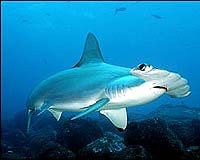| . |  |
. |
Madrid, Spain (SPX) Jun 26, 2009 Researchers from the Teruel-Dinopolis Joint Palaeontology Foundation have compared an Allosauroidea tooth found in deposits in Riodeva, Teruel, with other similar samples. The palaeontologists have concluded that this is the largest tooth of a carnivorous dinosaur to have been found to date in Spain. The features and size of the 9.83cm tooth provide key information needed to identify its former owner. The researchers are in no doubt - it was a large, predatory, carnivorous dinosaur (theropod) belonging to the Allosauroidea clade (one of the branches of the phylogenetic tree), a group that contains large carnivorous dinosaurs measuring between six and 15 meters. "Given the great variations between the teeth of different kinds of allosauroids, it would be prudent for us to assign this fossil to an indeterminate Allosauroidea", Luis Alcal�, one of the researchers involved in the study to be published in the upcoming issue of Estudios Geologicos and managing director of the Teruel-Dinopolis Joint Palaeontology Foundation, tells SINC. The tooth, found by local residents in Riodeva, Teruel, in the Villar del Arzobispo Formation, has been compared with other samples from the Allosauroidea group from the Iberian Peninsula - in particular with a large tooth from Portugal (measuring 12.7cm) and another belonging to an Allosauroidea indet in Spain, until now described as the largest in Spain at 8.27cm.
Working towards a complete faunal record of Riodeva Plant-eating dinosaur groups (phytophages) discovered in the deposit to date have been identified as sauropods, stegosaurids and basal ornithopods (from tooth remains and a complete rear leg). "Now the carnivorous dinosaurs are also represented, at least by two medium-sized theropods and a large predator belonging to the Allosauroidea clade", adds Alcal�. Carnivorous dinosaurs grew new teeth over their lifetimes, which increase the likelihood of finding them. In this case, the condition of the crown of the tooth found (without any reabsorption surfaces) indicates that it was not a discarded tooth. The palaeontologists hope to discover the remains of this large predator, which could have attacked Turiasaurus riodevensis, the 'European giant'. Share This Article With Planet Earth
Related Links FECYT - Spanish Foundation for Science and Technology Darwin Today At TerraDaily.com
 Third of open ocean sharks face extinction: study
Third of open ocean sharks face extinction: studyParis (AFP) June 25, 2009 A third of the world's open water sharks -- including the great white and hammerhead -- face extinction, according to a major conservation survey released Thursday. Species hunted on the high seas are particularly at risk, with more than half in danger of dying out, reported the Shark Specialist Group at the International Union for the Conservation of Nature (IUCN). The main culprit is ... read more |
|
| The content herein, unless otherwise known to be public domain, are Copyright 1995-2009 - SpaceDaily. AFP and UPI Wire Stories are copyright Agence France-Presse and United Press International. ESA Portal Reports are copyright European Space Agency. All NASA sourced material is public domain. Additional copyrights may apply in whole or part to other bona fide parties. Advertising does not imply endorsement,agreement or approval of any opinions, statements or information provided by SpaceDaily on any Web page published or hosted by SpaceDaily. Privacy Statement |